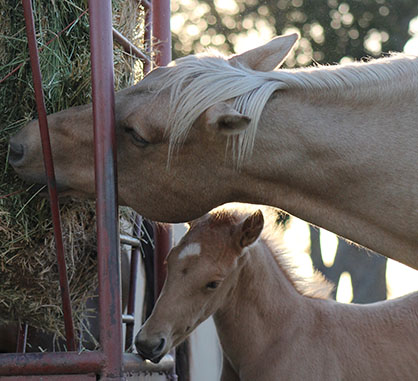Ulcers in Horses

Photo Credit: Brittany Bevis
Michigan State University Extension
By: Taylor Fabus
You may be surprised to discover how common gastric ulcers are in the equine population. Some studies have shown the prevalence of gastric ulcers to be as high as 50-90% of the observed population. There are a variety of reasons why this may be. According to Michigan State University Extension, several environmental factors may cause your horse to be more susceptible to ulcers.
Many factors can lead to gastric ulcers (in a variety of species) including:
- Rapid change in diet
- Change in environment or living condition
- Compromised immune system
- Change in routine (exercise, location or new horses to pasture)
Do you know the warning signs that ulcers may be present? Unfortunately, no two horses are alike, and their symptoms may be very different. Additionally, some horses may show little to no signs that they are suffering from ulcers.
Common signs of an ulcer problem:
- Lethargy
- Lack of appetite
- Irritability
- Mild colic symptoms
- Weight loss
- Diarrhea
Although there are challenges in diagnosing ulcers, the best advice is prevention. Avoiding gastric ulcers will save you time and money as well as help prevent unnecessary pain caused by the ulcers.
Some management tips for preventing ulcers are:
- Provide free choice forage in the form of hay or pasture
- Provide opportunities for turnout and grazing as much as possible
- Reduce the amount of grain in the diet
- Feed small meals of grain more frequently
Are you looking to learn more about gastric ulcers in horses? My Horse University and eXtension have great resources on the subject. Visit this listing of webinars specific to equine nutrition to learn more about proper feeding of horses to help prevent equine ulcers and similar issues related to nutrition.
This article was published by Michigan State University Extension. For more information, visit https://extension.msu.edu. To have a digest of information delivered straight to your email inbox, visit https://extension.msu.edu/newsletters. To contact an expert in your area, visit https://extension.msu.edu/experts, or call 888-MSUE4MI (888-678-3464).










